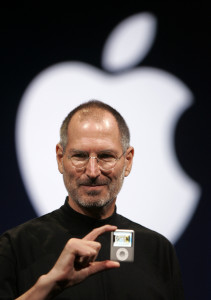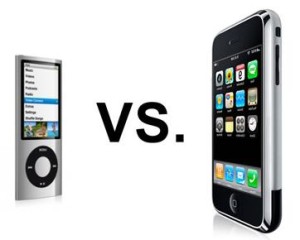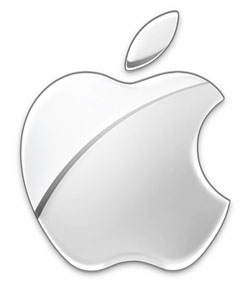Top Three Tips for Internal Branding
One of the keys to building a successful brand externally is to build your brand internally. Not only do your employees live and breathe the brand each day, but they are the ones communicating it to your current and future customers. So how do you develop a successful internal branding campaign? Here are a few tips.
- Provide easy to understand and easy to access tools. These tools could be as simple as a rack card at each employee’s desk or educational pages on your company’s intranet.
- Engage team members from multiple departments. Ask department leaders to highlight employees who are enthusiastic and willing to carry the brand flag within the team. Then educate these brand ambassadors on the brand and how to talk to their coworkers about the value of the organization’s brand.
- Do it once, twice, three times and don’t stop. Internal branding is not something that can be done once and be considered successful. If it is just done once, employees may just see it as a campaign. Regularly communicating about the brand will help engrain it in your organization’s culture. Consider highlighting a different organization benefit or value each month, explaining its value and showing examples of how the brand is lived each day by employees.
When your employees believe it, your customers and future customers will notice. By tapping into your greatest brand implementation tool – your workforce – your organization will not only be singing from the same hymn book (pardon my Southern phrasing), but so will your customers.
Here's to Steve
"Here’s to the crazy ones. The misfits. The rebels. The troublemakers. The round pegs in the square holes. The ones who see things differently. They’re not fond of rules. And they have no respect for the status quo. You can quote them, disagree with them, glorify or vilify them. About the only thing you can’t do is ignore them. Because they change things. They push the human race forward.
And while some may see them as the crazy ones, we see genius.
Because the people who are crazy enough to think they can change the world, are the ones who do."
- Apple "Think Different" Campaign
Photo credit: AP Photo/Paul Sakuma
Sibling rivalry: iPods vs. iPhones
My mother is obsessed with her iPhone. While she taps away on her touchscreen all day, she asks me why I don’t trade in my "clearly less superior" iPod nano (5th generation) for Apple's newer flagship device. My typical response is that my iPod is my music device and nothing more, and that's the way I like it, thank you very much.
But then people started using Facebook from their iPhones. Then Angry Birds became popular to play on-the-go. Now, all of my friends have started playing Words with Friends (appropriately).
But me? I'm still here with my iPod. And I'm starting to think my mom has a point.
We are approaching an age of the all-or-nothing device. Phones aren't appealing to consumers unless they can offer Internet access, Skype capabilities, a slew of apps, e-mail, a GPS, video players, and music, just to name a few features. The basic iPod, which is only a music (and sometimes video) player, simply can't compete anymore, and so its brand is suffering a slow demise.
The iPhone, on the other hand, is so adept at meeting every technological need that Apple is willing to let the iPod brand be exceedingly eclipsed by the iPhone brand. Why would Apple invest time and money to revive an increasingly irrelevant iPod brand, when it can minimally advertise the lucrative iPhone and garner massive earnings?
By choosing to essentially leave its iPod brand strategy alone, Apple's sales are starting to reflect iPhone domination. Where iPod sales superseded those of iPhones by $13 million in 2010, that amount shrunk to only a $3 million difference in the first quarter of 2011. If the sales gap diminished that much in just one year, the outlook seems very favorable for iPhones.
The iPod brand's last saving grace could be its highly established brand image. Like it or not, iPhones will always have their roots from the iPod brand, both in name and in likeness – and many people will always refer collectively to the products as "iPod" devices. Even so, it will be difficult for iPods to hold their own in the coming years against their all-encompassing, digital successors.
Contributed by Allison Meeks
Polaroid gone Gaga!
Looks like Polaroid has been re-branded by none other than Lady Gaga. The pop-culture icon has a new vision for Polaroid—literally. Since January 2010, the Fame Monster has taken on the role as creative director for Polaroid, designing and branding their latest round of camera products. There is still Polaroid brand equity for Gaga to reclaim and reinvent as the "camera" evolves.
The new line, Polaroid Grey Label, will maintain the brand’s core values of simplicity, authenticity, and sharing, while targeting a new generation with the futuristic style of Lady Gaga. The Grey Label is coined from “greige goods” a fashion term for fabric in its purest form. The name expresses the simplicity of Polaroid and the style of Gaga.
The most intriguing product presented is the Polaroid GL20 Camera Sunglasses. The product was inspired by the idea to fuse the icon of instant photography, with the queen of fashionable eyewear. These glasses not only allow eye protection from the sun, but also have a built-in camera that takes pictures and video. The camera fits on the bridge of the nose and the display screens are just below eye level, not to interfere with one’s line of vision. Not only can you take pictures with these glasses, you can also play them back to the world as you live it.

Another Grey Label item is the Polaroid GL10 Instant Digital Camera. Don’t be deceived by the boxy, old-fashioned look. This camera prints digital images right into your hands! It comes with a modern LCD screen display, and brings back instant image printing, defining the Polaroid picture of the new age.
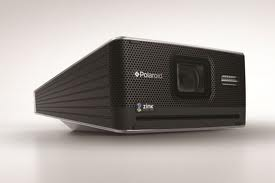
The final product is called the GL10 Instant Mobile Printer. It’s a mini machine for printing photos instantly from your phone or camera anywhere-- at a party, in the office, in the car—and it’s small enough to put in a purse. It acts as a functional tool as well as a fashion accessory. According to Lady Gaga, "This product will revolutionize how we see photos. Your images will no longer die a death on your cell phone or digital camera."
The Instant Mobile Printer, Instant Digital Camera and the Camera Glasses are a unique “look” at how to turn images into a fashion statement. The products are coming out this summer 2011, and there’s no question they will require a large chunk of change. However the price of a Polaroid in it's heyday of the 90s did not detract from the allure of the brand. Hopefully the Grey Label will provide the same appeal.
Contributed by: Emily Hassell
Right-of-the-Dot Domains - What's it Worth to Your Brand?
No doubt anyone reading this blog is aware that nearly all websites (excluding institutions such as universities and government agencies) end in ".com." But, what you may not know is that in the coming weeks website names will change. The Internet Corporation for Assigned Names and Numbers ICANN – a non-profit for assigning domain names and IP addresses - announced it would create hundreds of new names for category domains that would include both generic spaces (i.e. ".beaches") and brand specific spaces (i.e. ".microsoft"). Technically named gTLD (generic top level domains) these new vanity domains can be more easily understood as "right of the dot domain."
There is going to be a lot of conversation and questions surrounding this move by ICANN in the coming weeks due to the potential headaches brands and companies will face in deciding if and how they will approach this new branding opportunity.
To give you an idea of how this announcement may potentially affect companies and brands we've listed out the Pros and Cons of the new "right of the dot domain" era.
Pros:
- More Controlled Brand Building on the Internet –With company and brand specific domains companies will have the opportunity to build a larger brand presence on the internet through these brand domains. As long as a company can prove they own the trademark to a name they will be granted the domain.
- Generic Domain Names are Fair Game - This could be highly beneficial for the lucky companies that snag these generic domains as they would then control all of content posted at those generic domains. For example, if Nike won the rights to host the domain ".sports" they would control any and all information at ".sports" putting them in a position to be the reigning authority to anything sports related
- Greater Brand Control - Similar to the point above, registering ."yourcompany" will give you control over anything at that domain – virtually eliminating all potential fraud or negative brand images.
Cons:
- Small Application Window – there will only be a 60 day open window for applications – after that it may be another 4-5 years before applications are accepted again
- One Brand Could Monopolize on Generic Spaces – though it can (and will be) viewed as pro for the few that can get the generic domain spaces like ".sports," for those who miss out will now potentially have their competitors controlling all content at such sites, which in turn may turn them in the industry thought leaders on a particular subject.
- A Brand has Hundreds of Brands Under their Umbrella – Some companies, such as Proctor & Gamble, own hundreds of brands; which brings the question where does such a company draw the gTLD line? Does P&G buy a domain for every product, or none at all? Securing gTLD's will not come cheap. So, how much is it worth to a company to have vanity domains for each of their brands? How much control do they really need/want on the Internet?
- A New Townhome or New Domain Name? - Filing cost is $185,000 per domain and an additional $25,000 in annual domain fees.
- The Application Closely Resembles a Short Novel – The ICANN application is a 150 page document that will be published in mid-June. After it is published there will only be a short time window to submit it.
The ".com" that we have all become accustomed to will more than likely continue to be the norm on the Internet, but it will be interesting to see how companies and brands use the new right-of-the-dot vanity URL to help build their brand's online presence.
Happy Birthday Apple Stores!
A lot has changed since 2001. Back in yesteryear Mark Zuckerberg was not a household name, the word tweeting was the sound a bird made, and as of May 2001 Apple had yet to open any retail stores – the catalyst that helped Apple become the brand that it is today.
Today marks the 10th anniversary of Apple opening their first retail store in Tysons Corner, VA, a Washington, DC suburb. At the time many in the retail industry saw the move as risky, because "big box" technology stores had a stronghold on technology sales. Apple broke away from the norm with their stores by exclusively selling Apple products, instead of selling them alongside their competitors.
No doubt much of Apple's success has come from their innovative and industry changing products, but it is also impossible to ignore the fact that the brand's success has a lot to do with their brand image and seemingly flawless execution of brand standards.
Take a moment to think of each Apple store you've been in. It's hard to decipher which is which, and where each was located isn’t it? You can attribute that to the fact that Apple cuts no corners in controlling their retail environments. Each store has the same look and the same feel, when you step into an Apple store there is no second guessing your location. Isn't that something all brands desire to achieve, an all knowing awareness of their brand?
Whether its architectural design, package design, or product design, Apple uses a consistent brand image to maintain a familiarity amongst consumers, and in a world dominated by ever changing technology Apple's consistent design and image has no doubt helped the brand who was ranked as the world's 49th most valuable brand in 2001 skyrocket to the top of the list and land at #1 in May 2011.
So, Happy 10th Birthday Apple stores, I'm sure you'll have no problem getting friends to come to your birthday party.
Tag, You're It!

Facebook recently introduced a subtle change and for once it won't change the appearance of your news feed. Facebook introduced a new feature that allows users to identify people or objects that have their own Facebook Pages.
Previously, users could only tag their friends. Now users can tag celebrities or public figures they meet or tag the brands and products they use. For example, if I posted a photo of myself running in Nike sneakers, I could label the shoes with a tag that links to Nike's official Facebook Page.
For now, this tagging feature is limited to Pages for people or brands and products, although Facebook plans to expand these categories.
If it catches on, this new feature could be great for brands looking to go viral and spread awareness about their products. Companies will no doubt run contests, forcing participants to tag products. It is essentially free advertising on one the coolest and most popular websites today. At least for now.
The new tagging feature could also be an opportunity for Facebook to monetize the site's photo service, perhaps adding sponsored tags.
After all, nothing evokes fond family memories like that tagged bottle of soda in the background!
Twitter is watching you.
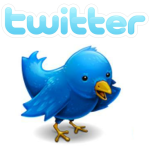
................................................................................................................................
Although Animal Farm is one of my favorite novels, George Orwell really annoyed me with 1984. Well, just kidding, I really liked that book too. I was just bitter that he picked my birth year to predict a totalitarian world where privacy and civil rights didn’t exist anywhere. I mean, I thought 1984 was great year for a baby. Anyway, he might have been onto something, just a decade or two too early.
Though mainly non-partisan when it comes to politics, it was hard not to see the door to our liberties close slightly with the Patriot Act of 2001. A statue that allowed the government to selectively access telephone, email, medical and financial records to protect our “freedom”, it made everyone wonder … is anything private anymore? Well, not really. And with the crazy technological boom of the past decade, it’s made the line between what is private and what is public not only blurry, but pretty much invisible.
Insert the social media craze. Whether searching for a job, investigating a crime, or just trying to spread a plethora of fast knowledge, outlets such as Facebook and Twitter have become catalysts for studying human behavior and examining an individual’s thoughts. Now some of these thoughts are being filed into public record ... and studied.
Read more
An app by any other name is the same
According to The American Marketing Association (AMA), a brand is defined as a "name, term, sign, symbol or design, or a combination of them intended to identify the goods and services of one seller or group of sellers and to differentiate them from those of other sellers." Key word here = differentiation.
My job entails creating new identities for companies ... products, services, new corporations. In doing so I strive to create a moniker that stands out from the competition; a name that effectively positions the offering in a way that offers distinction and memorability.
So why is it that iPhone apps don't appear to operate under the same guidelines? I was searching for a calorie counter app the other day - type in anything related to calories, exercise or fitness and you are inundated with apps that promise to trim your waistline and increase your cardio stamina. Problem is, aside from the price and the star-based feedback, how do you tell them apart? At first glance alone, how do you differentiate?
Here are the results of my app search for 'calorie': Read more
A Refreshing New Offering from Intuit
......................................................................................................................................................................
Like any good American, I was doing my taxes recently. I’m a TurboTax gal. I’ve used it for the past 6 years and it’s pretty easy. As I got closer to the end, fingers and toes crossed hoping for a refund (it didn’t work), I came to a screen with an ad for Mint.com. Well this is new, I thought. Those smart folks at Intuit – you know, the makers of TurboTax, Quicken, and QuickBooks – have a new product.
The name, Mint, might make you think refreshment like the plant or may make you think of making money. I like both so I checked it out. The site aggregates all of your bills, accounts and debts into one site so you can budget and easily keep an eye on your accounts. I like budgets (she says with a smirk).
But the reason I really like it? It is endorsed by Intuit. Intuit has established itself as a financial software resource and immediately I trusted my information would be secure and accurate on Mint.com as well. It turns out Intuit acquired Mint.com late last year. Before the acquisition, I wouldn’t have given the site a second look. Tying Mint.com to Intuit gives it immediate credibility and positive associations.
I tried Mint.com out and it was very easy to use. The problem is that I’m a little paranoid when it comes to giving my information out online despite Intuit’s stellar reputation for security. So, for the moment, the only mint in my life is in my green tea.

